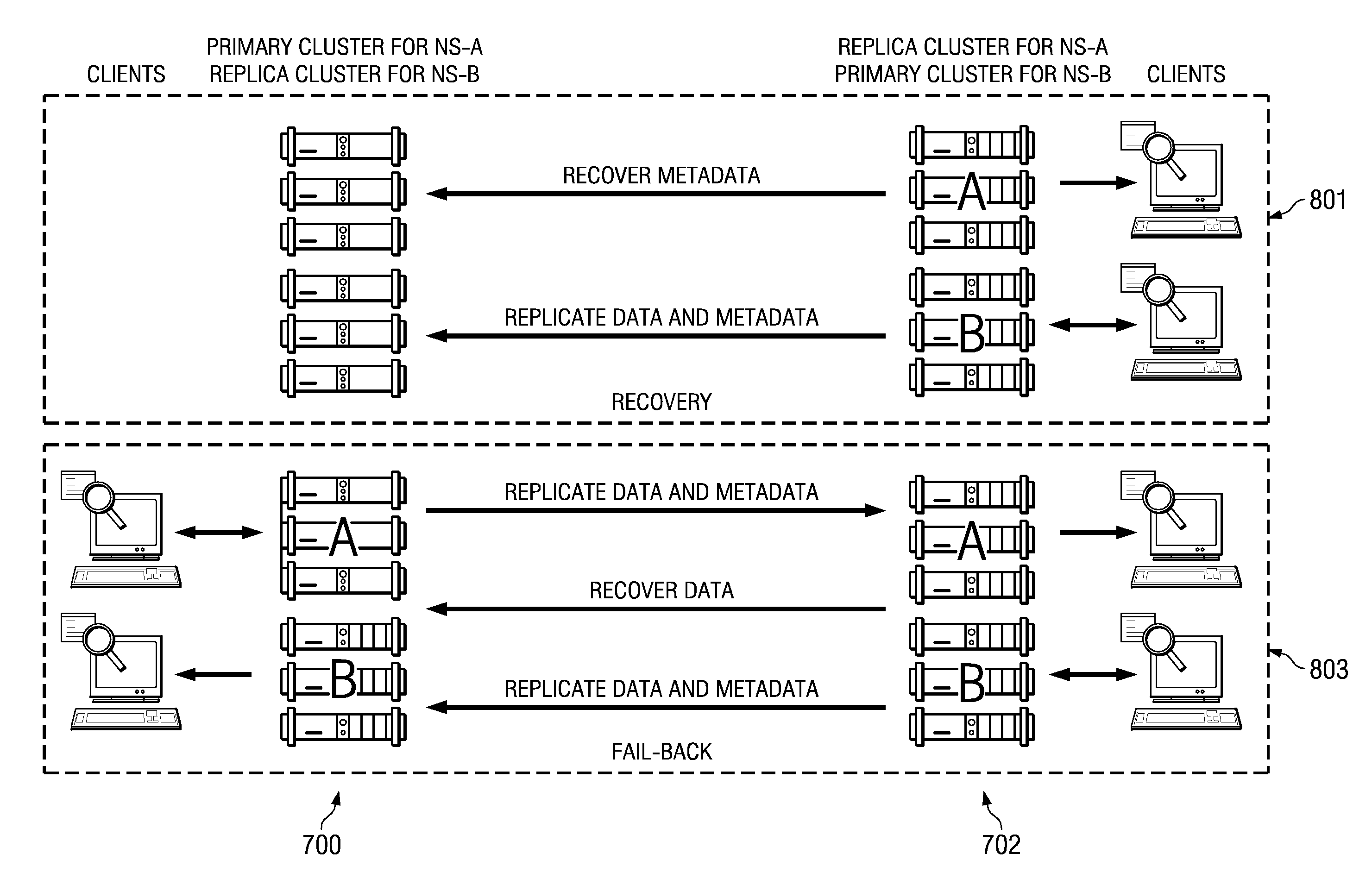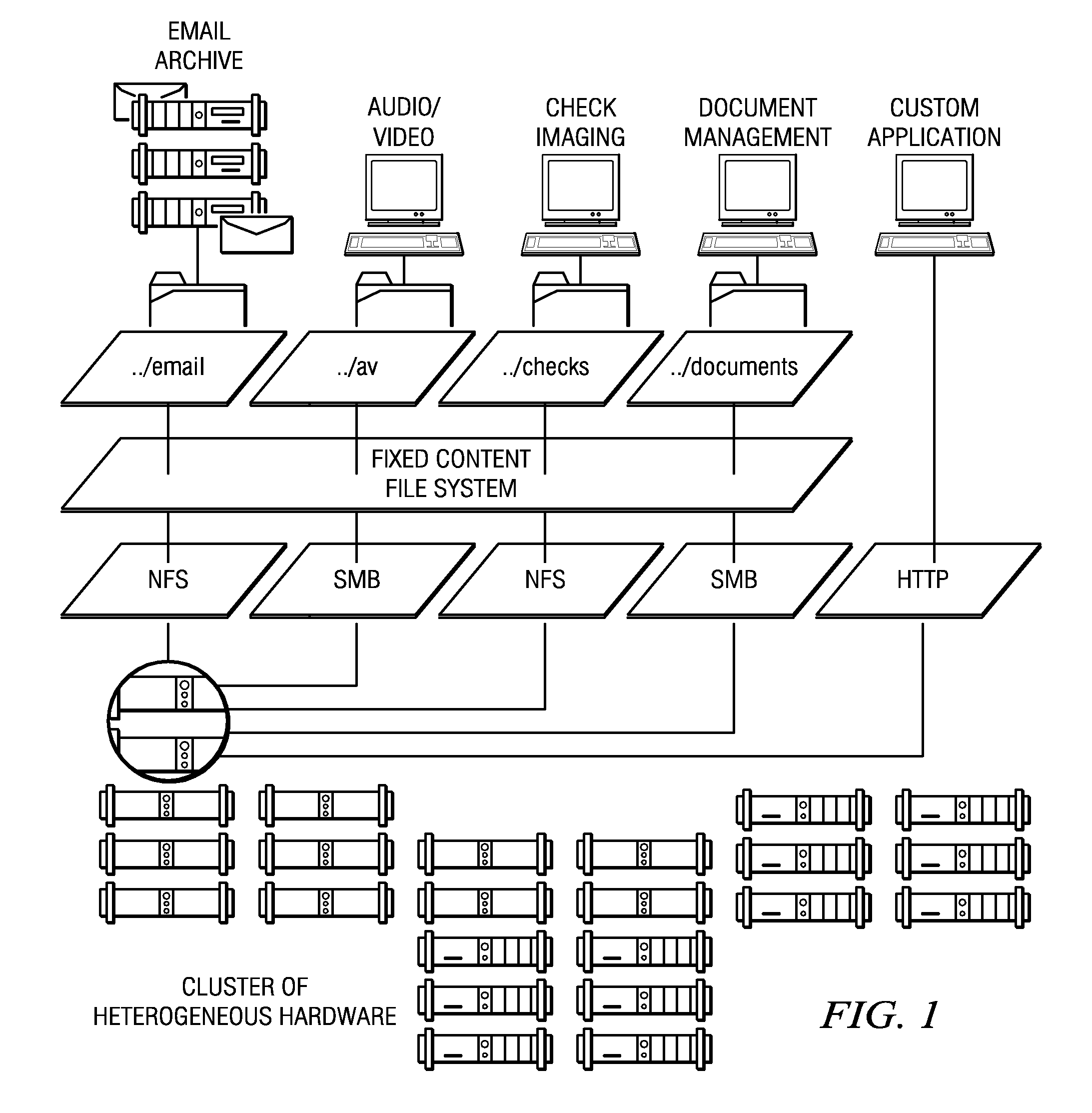Fast primary cluster recovery
a primary cluster and recovery technology, applied in the field of fast primary cluster recovery, can solve problems such as failure to perform the operation, and achieve the effect of facilitating replication
- Summary
- Abstract
- Description
- Claims
- Application Information
AI Technical Summary
Benefits of technology
Problems solved by technology
Method used
Image
Examples
Embodiment Construction
[0016]It is also known to provide a scalable disk-based archival storage management system, preferably a system architecture based on a redundant array of independent nodes. The nodes may comprise different hardware and thus may be considered “heterogeneous.” A node typically has access to one or more storage disks, which may be actual physical storage disks, or virtual storage disks, as in a storage area network (SAN). The archive cluster application (and, optionally, the underlying operating system on which that application executes) that is supported on each node may be the same or substantially the same. In one illustrative embodiment, the software stack (which may include the operating system) on each node is symmetric, whereas the hardware may be heterogeneous. Using the system, as illustrated in FIG. 1, enterprises can create permanent storage for many different types of fixed content information such as documents, e-mail, satellite images, diagnostic images, check images, vo...
PUM
 Login to View More
Login to View More Abstract
Description
Claims
Application Information
 Login to View More
Login to View More - R&D
- Intellectual Property
- Life Sciences
- Materials
- Tech Scout
- Unparalleled Data Quality
- Higher Quality Content
- 60% Fewer Hallucinations
Browse by: Latest US Patents, China's latest patents, Technical Efficacy Thesaurus, Application Domain, Technology Topic, Popular Technical Reports.
© 2025 PatSnap. All rights reserved.Legal|Privacy policy|Modern Slavery Act Transparency Statement|Sitemap|About US| Contact US: help@patsnap.com



